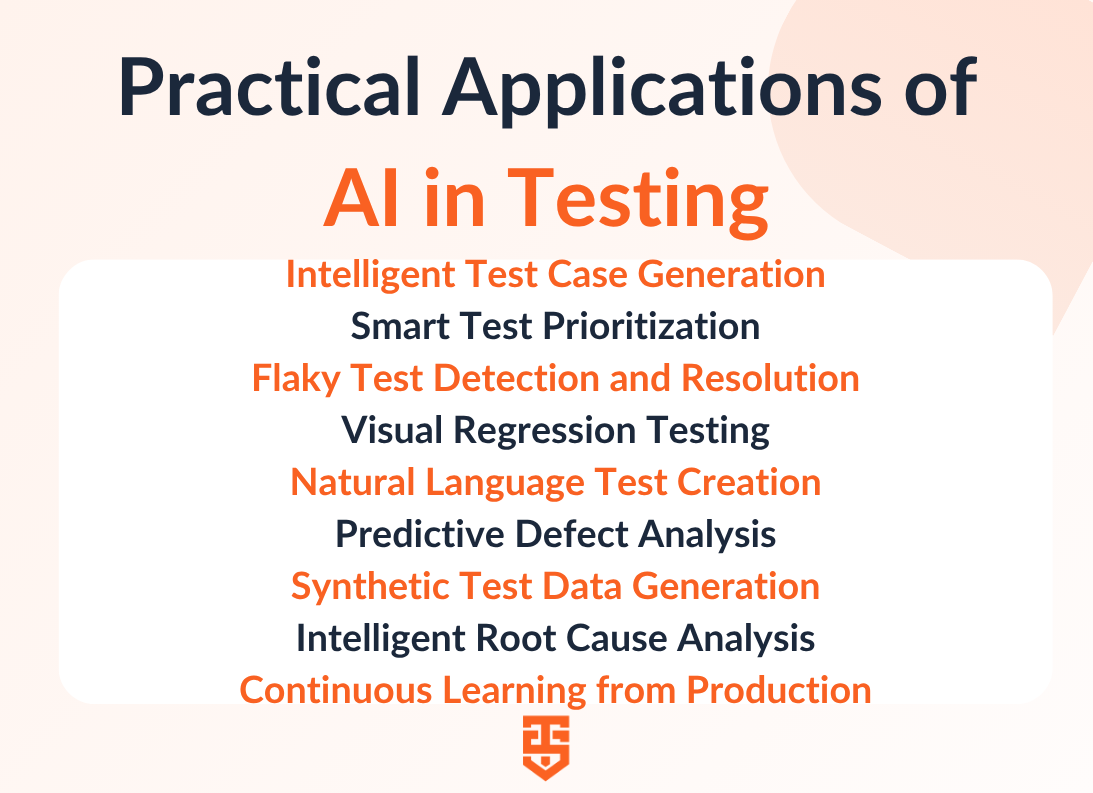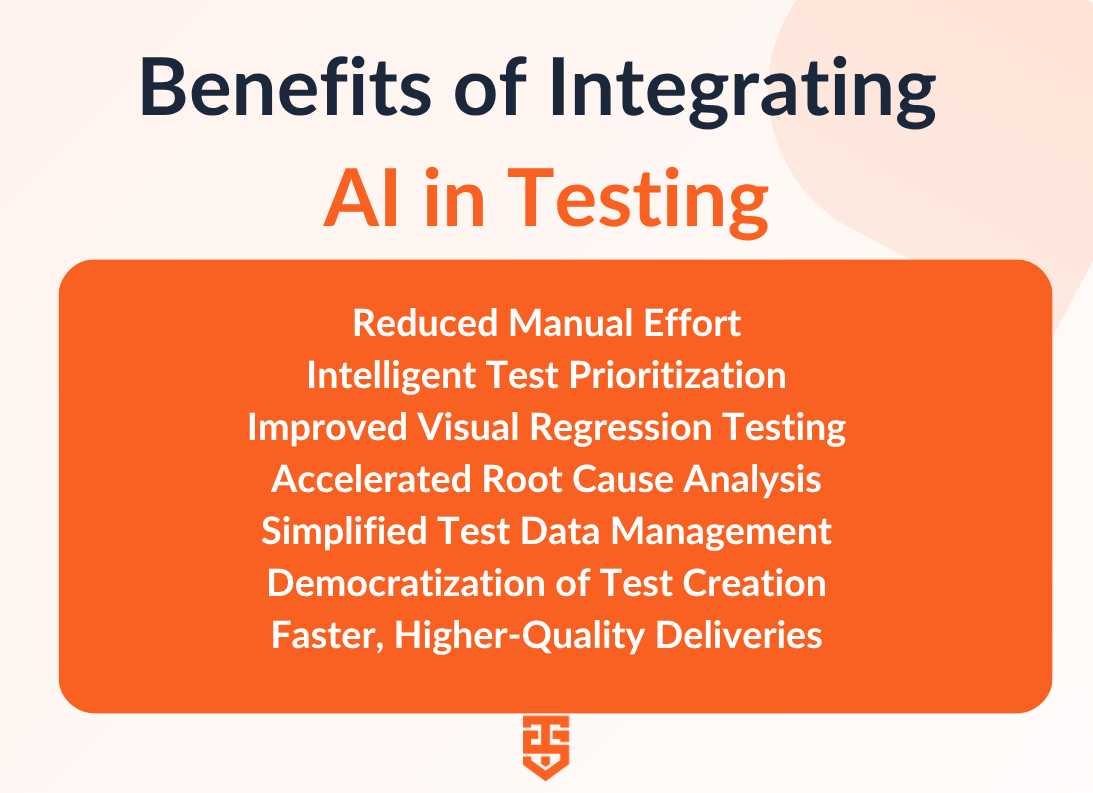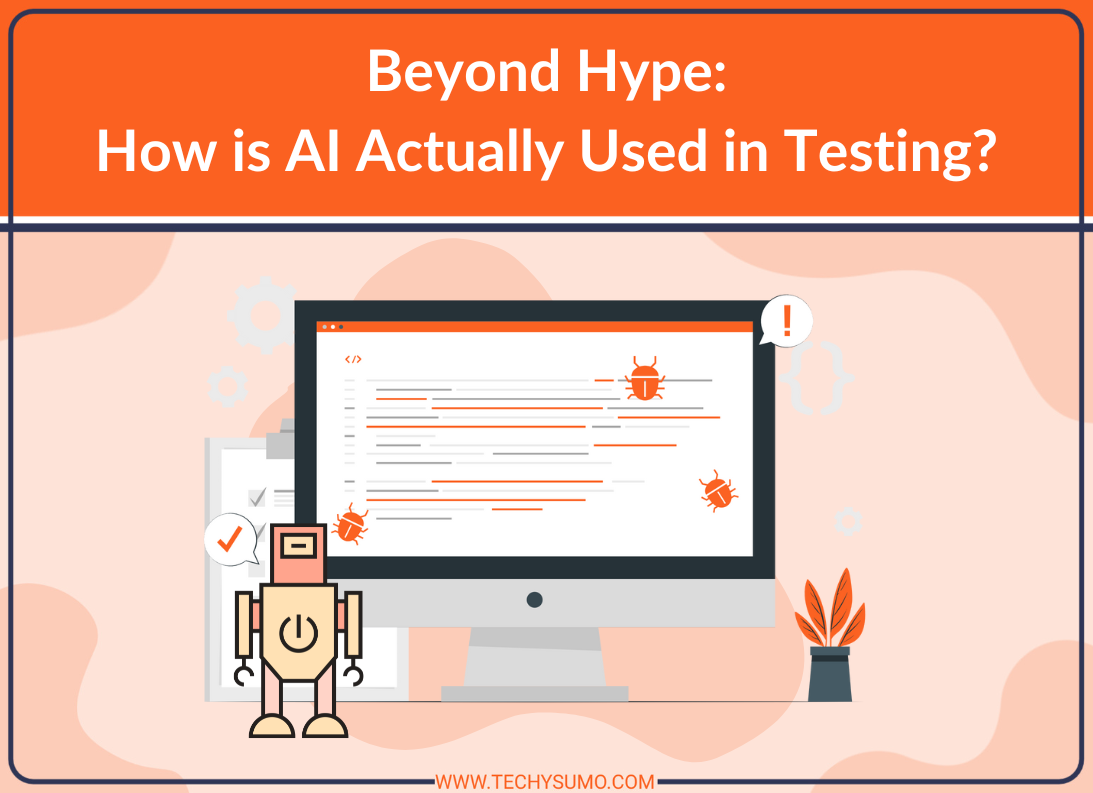AI is playing an important part in how software testing is performed, even though it is prone to marketing hype. The fact remains that modern software development depends on faster, better and agile testing, which traditional approaches cannot provide.
AI brings a whole new dimension to quality assurance by way of facilitating automation of repetitive work, failures prediction, and test coverage optimization with increased accuracy and less manual effort.
This blog will cover the practical application of AI in testing and some AI-powered tools that are bringing these advances to life. Knowing the real applications of AI can help teams start applying it to improve software quality and faster release cycles.
Table of Contents
Why AI in Testing Matters
Software is nowadays intricate, ever-evolving, and released at a breakneck speed. Manual testing isn’t able to match this pace by itself, and conventional automation becomes very maintenance-heavy because of UI updates and flaky tests. AI solves these issues by picking up things from data, adjusting to changes, and intelligently prioritizing testing efforts.
Instead of replacing human testers, AI for software testing serves as an assistant and performs mundane tasks, brings to the surface probable defects, and allows the tester to concentrate on exploratory and critical quality work. This collaboration leads to higher-quality products delivered faster.
Also Read
Practical Applications of AI in Testing

Intelligent Test Case Generation
AI is able to examine user behavior and system data to generate automatically test cases that include the most applicable and significant scenarios. This minimizes the effort required by hand and maximizes test coverage, making sure that essential user flows and edge cases are part of the test set.
Smart Test Prioritization
Running all tests after every code change is often impractical. AI helps by analyzing code changes and historical test results to prioritize tests that are more likely to fail or affect key functionality. This selective approach optimizes test cycles and accelerates feedback on quality.
Flaky Test Detection and Resolution
Flaky tests undermine confidence in automation results and waste time. AI can detect patterns in flaky test behavior, identify root causes such as timing issues or environmental inconsistencies, and suggest fixes. In some cases, AI can auto-heal tests by adjusting selectors or wait times to reduce instability.
Visual Regression Testing
Traditional pixel-by-pixel comparison struggles with false positives due to minor UI shifts. AI enhances visual testing by understanding layout and functional significance of changes, reducing false alarms and focusing attention on actual regressions that impact user experience.
Natural Language Test Creation
Using NLP, this AI system allows users to write test cases in natural English, which then gets turned into executable automation scripts. Testing gets democratized through the advances in AI, as it builds collaboration bridges between developers, testers, and business stakeholders.
Predictive Defect Analysis
AI models predict which parts of the application are vulnerable to defects by looking at patterns in past test failure data, commit histories, and code complexity. Such foresight assures that testing teams are able to allocate resources more to higher-risk activities rather than to areas that are less risky, and thus helps avert production issues that the company may find hard to bear. In addition to predictive models, tools like an AI software code detector can assist teams in identifying anomalies or AI-generated code that may introduce unexpected behaviors. These detectors add another layer of assurance in maintaining code quality and reliability across the development cycle.
Synthetic Test Data Generation
AI can generate realistic synthetic data that mimics production datasets while preserving privacy and compliance. This accelerates testing preparation, ensures relevant data coverage, and eliminates risks associated with using sensitive real data.
Intelligent Root Cause Analysis
When failures occur, AI analyzes logs, test history, and environmental factors to identify the probable cause faster than manual investigation. This speeds up defect triaging and resolution, improving overall test efficiency.
Continuous Learning from Production
AI continuously analyzes production data like crash reports and user interactions to detect gaps in test coverage. It feeds this information back into the testing process, enabling continuous improvement and better alignment between QA and real-world application behavior.
AI-Powered Tools Enhancing Software Testing
Here are some notable AI-driven tools designed to improve testing workflows:
Kane AI by LambdaTest

Kane AI is an intelligent testing assistant integrated with LambdaTest’s cloud platform. It automates test case generation, offers intelligent debugging suggestions, and provides predictive analytics to optimize test execution. Kane AI also supports auto-healing of tests and smart visual validation, helping teams maintain stable and reliable test suites with minimal manual intervention. By leveraging AI for software testing, Kane AI enhances efficiency, accuracy, and adaptability in dynamic application environments.
Key Features:
• Automated test case generation based on usage data
• Intelligent debugging suggestions for faster defect resolution
• Predictive analytics to prioritize test execution
• Auto-healing of flaky tests through smart script adjustments
• AI-powered visual validation to reduce false positives
Testim

Testim uses machine learning to stabilize tests by automatically adjusting to UI changes. Its AI-driven authoring helps create and maintain tests faster, reducing flaky tests and enabling quicker releases.
Key Features:
• Self-healing tests that auto-adjust to UI modifications
• AI-powered test authoring to simplify creation and maintenance
• Smart analytics to identify flaky tests and failure trends
• Integration with CI/CD pipelines for continuous testing
Functionize

Functionize leverages AI to create, execute, and maintain tests in an adaptive environment. It uses natural language processing for test creation and employs machine learning to optimize testing across complex web applications.
Key Features:
• Natural language test creation for easier automation
• AI-powered adaptive test execution that handles UI changes
• Scalable cloud testing with detailed failure analysis
• Supports cross-browser and cross-device testing
Test.AI

Test.AI focuses on intelligent test automation by training bots to mimic human testers. It detects UI changes automatically and adjusts tests to maintain reliability, especially useful for mobile and web apps with frequent UI updates.
Key Features:
• AI-driven bots that simulate human interactions
• Automatic UI change detection and test adjustments
• Supports mobile and web platforms
• Reduces test maintenance overhead
TestCraft

TestCraft is a test automation platform powered by AI that enables teams to write and maintain Selenium tests without coding. It applies machine learning to identify application changes and make automated adjustments, decreasing maintenance and increasing reliability. It’s perfect for teams seeking scalable, rapid test delivery with less effort.
Key Features
• No-code test creation using visual modeling
• AI-powered auto-healing of tests to handle UI changes
• Selenium-based, enabling integration with existing frameworks
• Scalable test execution with detailed analytics
• Supports continuous integration environments
These tools already show a growing trend where AI provides test automation support as the tools are resilient, provide optimization for execution, and actionable insights, altogether aids QA teams to deliver better software with less false alarm, and maintainability.
AI in Testing: Myths vs. Reality
There are common misconceptions about AI in testing that can lead to unrealistic expectations. One is that AI can fully automate test creation and maintenance without human involvement. In reality, while AI can generate and update tests intelligently, human expertise is still needed to interpret results and design complex test scenarios.
Another myth is that AI replaces manual testing altogether. Exploratory testing, usability tests, and some edge cases should ultimately rely on human intuition and judgment. AI enables teams to focus on pieces where human insight adds the most value by managing as many of the repetitive and data-heavy tasks as possible.
Further, some people contend that AI testing tools are only useful for large enterprises with larger budgets. But, actually, many of the AI testing solutions are very viable for small and medium-sized teams that are looking for scalable pricing and integrations that do not require significant upfront commitments.
Recognizing these facts permits teams to take a posture of integrating AI solutions purposely, maximizing the technology’s abilities while being clear about its limitations and downsides.
Benefits of Integrating AI in Testing

Using AI in software testing brings many advantages.
Reduced Manual Effort
AI automates test case creation and maintenance, minimizing the need for manual scripting. Auto-healing scripts reduce flaky tests, resulting in more reliable and stable automation outcomes.
Intelligent Test Prioritization
AI analyzes code changes and failure patterns to prioritize tests that matter most. This speeds up feedback cycles by focusing resources on high-risk areas and critical functionalities.
Improved Visual Regression Testing
AI enhances visual testing by distinguishing real UI issues from minor, insignificant changes. This reduces false positives and helps teams focus on genuine visual defects, boosting productivity.
Accelerated Root Cause Analysis
When tests fail, AI tools quickly analyze logs and test data to identify probable causes. This speeds up debugging, allowing faster resolution of defects and smoother release cycles.
Simplified Test Data Management
AI generates realistic synthetic test data that protects sensitive information while providing diverse test scenarios. This accelerates testing preparation and broadens coverage.
Democratization of Test Creation
Natural Language Processing (NLP) enables non-technical team members to write test cases in plain language. This fosters better collaboration and wider participation in the testing process.
Faster, Higher-Quality Deliveries
By combining automation, intelligence, and collaboration, AI helps teams deliver software faster and with improved quality. It enables more confident releases with fewer defects reaching production.
Looking Forward: The Future of AI in Testing
The AI role in testing will keep growing as development shifts toward continuous integration and continuous delivery paradigms. Future developments can include increased automation of setting up test environments, deeper integration with monitoring and logging systems, and more independent test pipelines that adapt autonomously based on AI feedback. Linkhouse
Self-healing test environments wherein not just the test scripts but also infrastructure learn to change could gain mainstream traction. In addition, AI will take on a larger role in testing AI-powered applications themselves, such as for ensuring fairness, reliability, and explainability.
With the maturation of hyperautomation, AI will aid in orchestrating the entire delivery process from code commits up to testing, deployment, and monitoring, rendering software development predictive and reliable.
Conclusion
AI in testing is so much more than a buzzword; it is an effective toolset that is changing the way teams tackle quality assurance. From intelligent test case generation to predictive defect analysis and smart test prioritization, AI enables testers to work more effectively and efficiently.
With technology such as Kane AI by LambdaTest at the front, organizations of all sizes can use AI to decrease maintenance, accelerate releases, and deliver better quality software. Adopting the practical uses of AI allows teams to cut through hype and build smarter, more robust testing strategies that meet the needs of today’s software development.






